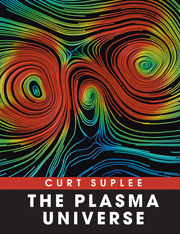Book contents
- Frontmatter
- Contents
- List of Figures
- Preface
- Chapter 1 The Fourth State of Matter
- Chapter 2 The Music and Dance of Plasmas
- Chapter 3 The Sun–Earth Connection
- Chapter 4 Bringing the Sun to Earth: The Story of Controlled Thermonuclear Fusion
- Chapter 5 The Cosmic Plasma Theater: Galaxies, Stars, and Accretion Discs
- Chapter 6 Putting Plasmas to Work
- Index
Chapter 3 - The Sun–Earth Connection
- Frontmatter
- Contents
- List of Figures
- Preface
- Chapter 1 The Fourth State of Matter
- Chapter 2 The Music and Dance of Plasmas
- Chapter 3 The Sun–Earth Connection
- Chapter 4 Bringing the Sun to Earth: The Story of Controlled Thermonuclear Fusion
- Chapter 5 The Cosmic Plasma Theater: Galaxies, Stars, and Accretion Discs
- Chapter 6 Putting Plasmas to Work
- Index
Summary
THERE ARE 100 BILLION STARS in our galaxy, give or take a few billion, ranging from sputtering wimps barely larger than Jupiter to blazing monsters 2000 times the diameter of the Sun. What they have in common is that each one of them is an incandescent plasma, including our indispensable and boisterous local star.
The Sun shines because, deep inside it, a process called nuclear fusion combines nuclei of hydrogen, the most abundant element in the cosmos, to create nuclei of helium, the second most abundant. In doing so, it releases vast amounts of energy from tiny dimensions. This is possible because within the atomic nucleus (10 000 times smaller than the atom itself) resides the mightiest force in nature: the aptly named “strong” interaction that holds the components of nuclear particles together. One manifestation of that force, called “binding energy,” keeps protons and neutrons – collectively known as nucleons – tied firmly to one another in the nucleus.
That's a stupendous feat. The elementary hydrogen nucleus is a single proton. Protons have a positive electric charge, and therefore naturally repel other protons. And that repulsive force increases as the particles get closer.
Still, it is no match for the binding energy, which is about 20 times stronger than the electromagnetic force. But the binding energy only takes over at very close range: it loses strength beyond a couple millionths of a billionth of a meter.
- Type
- Chapter
- Information
- The Plasma Universe , pp. 27 - 38Publisher: Cambridge University PressPrint publication year: 2009



